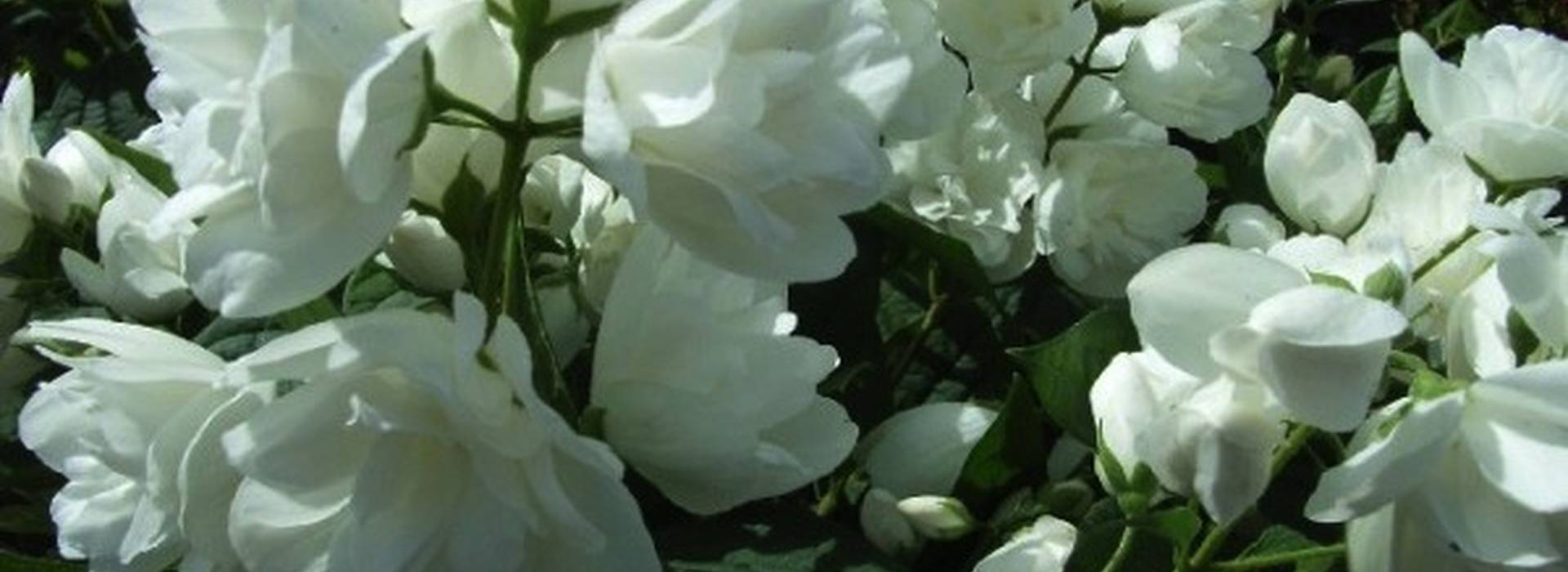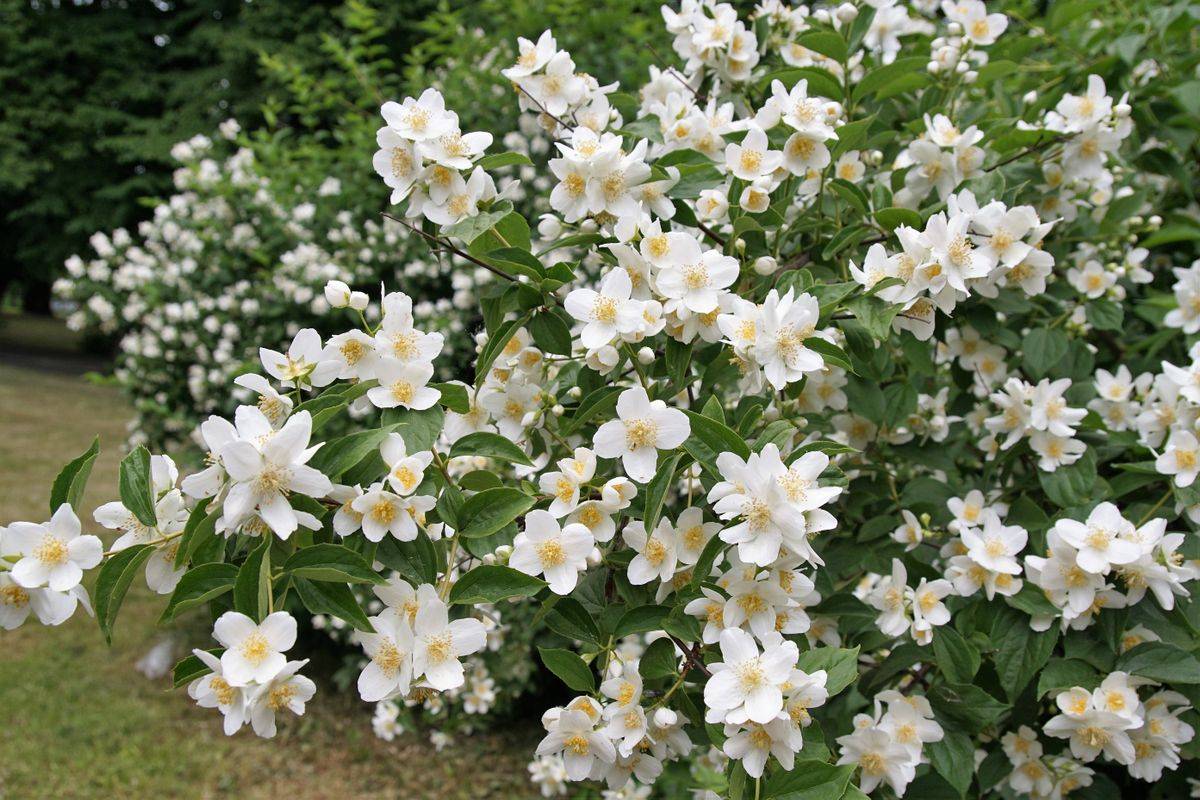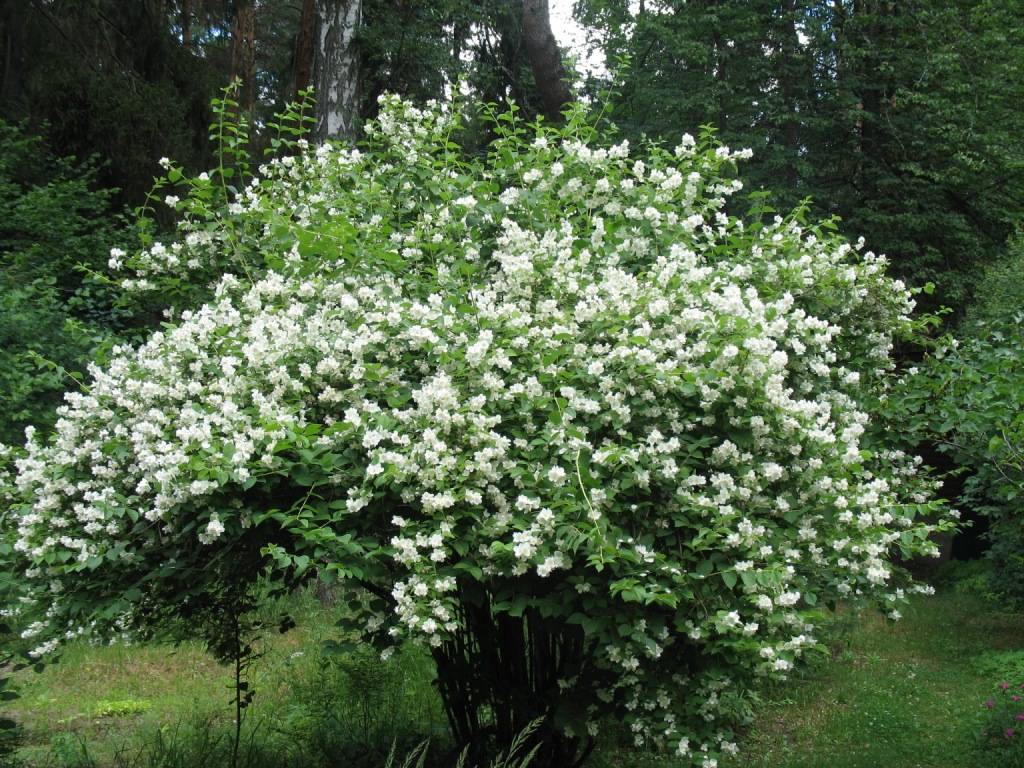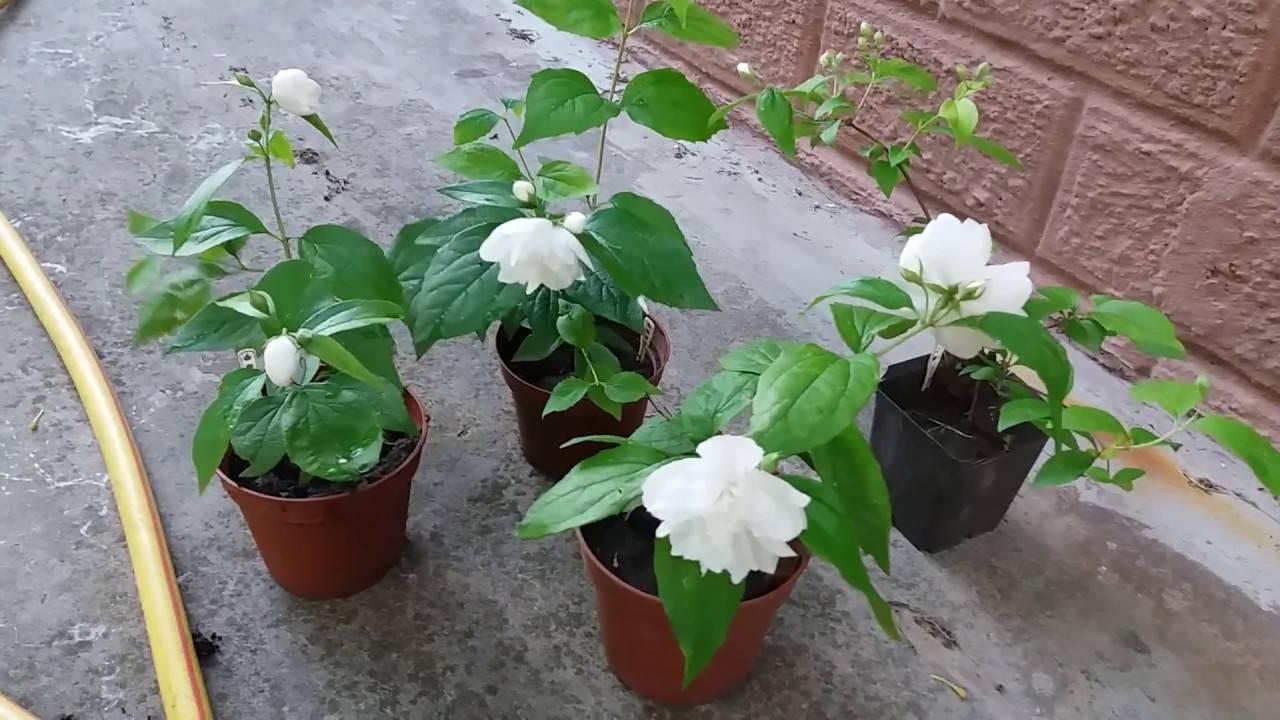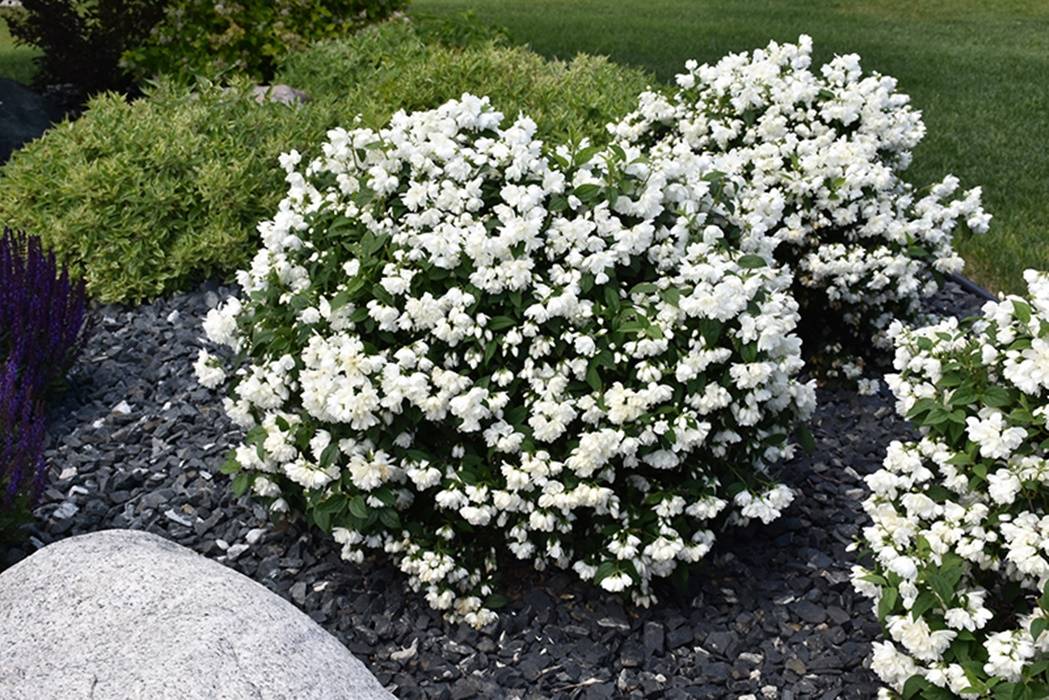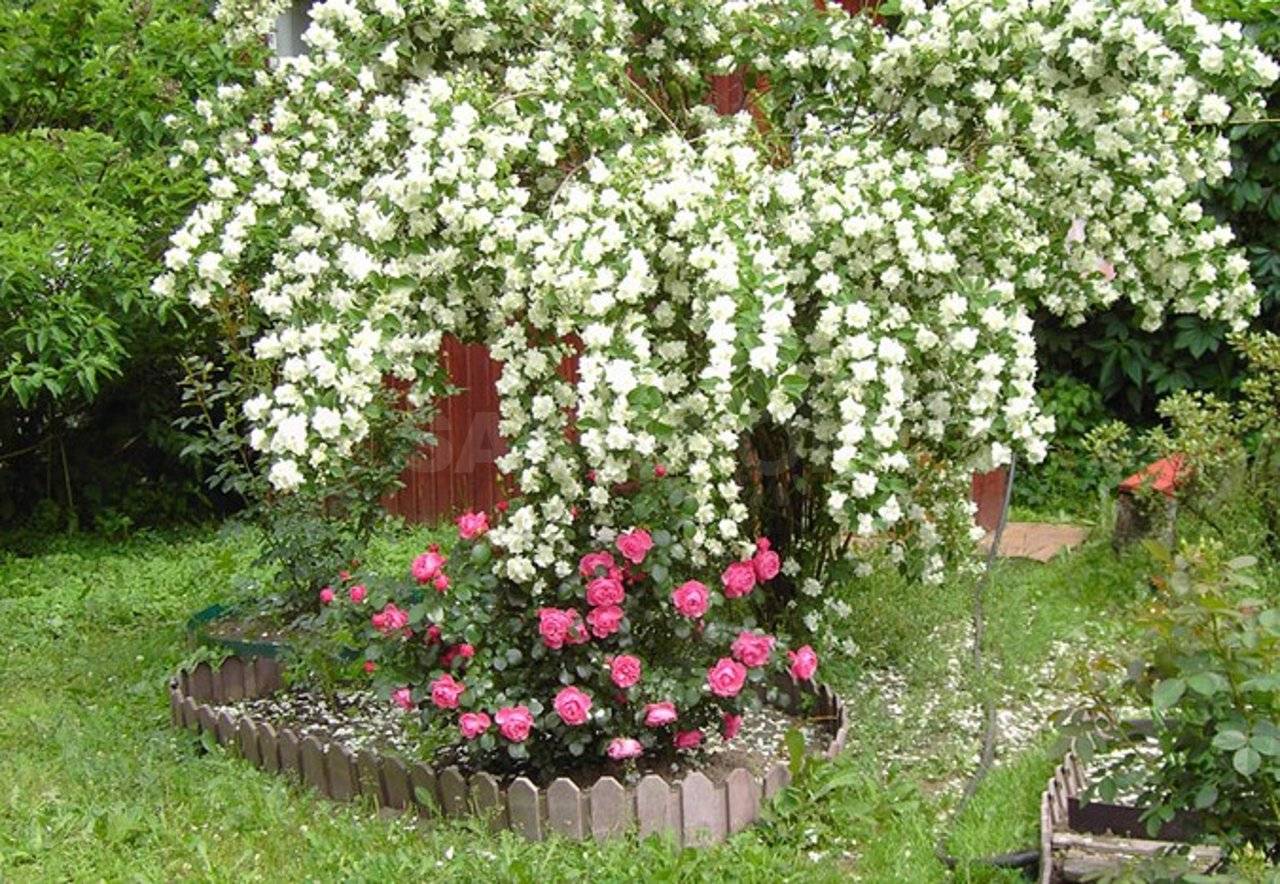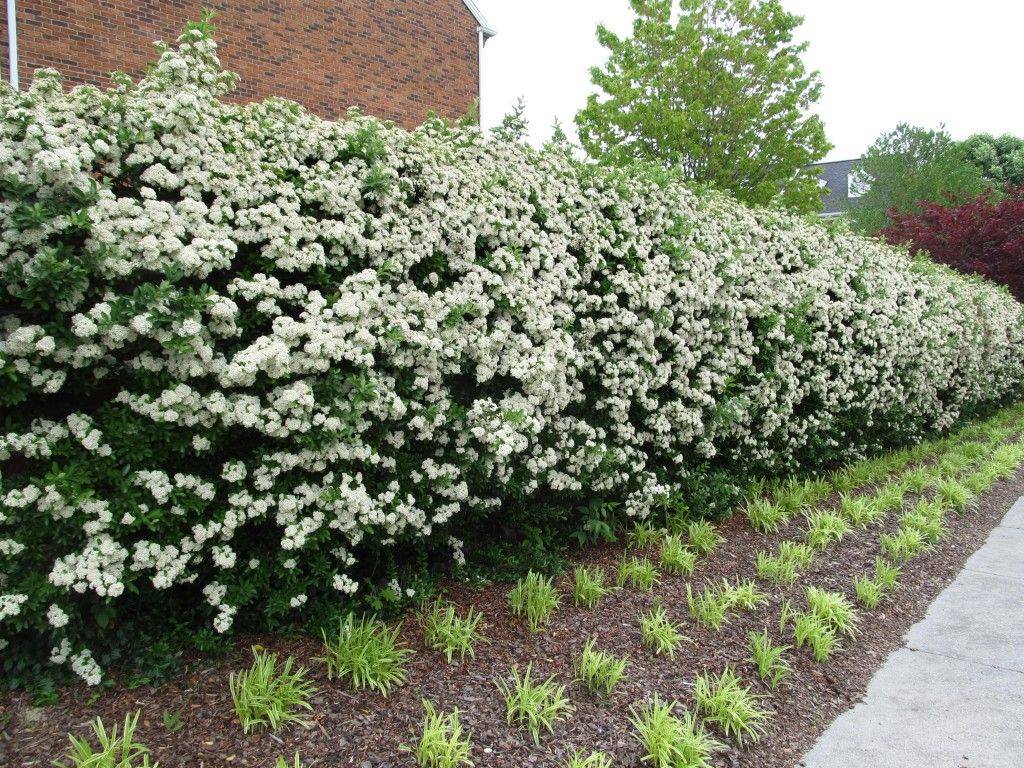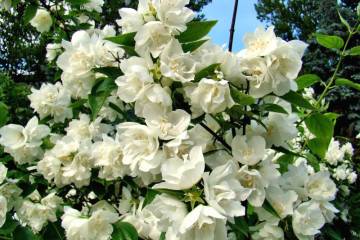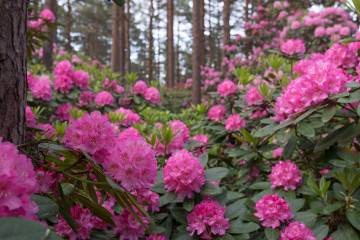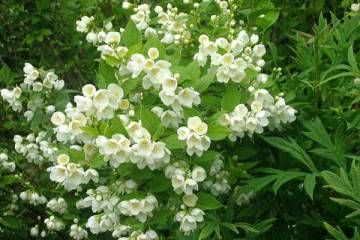Chubushnik snowbel - description, planting and care
Content:
Fans of garden design call Snowbel's mock-up "Snow Beauty". This is because during the flowering period the bush resembles a snowball, exuding a delicate scent of jasmine. Although this plant looks like a jasmine, it is a Philadelphus Snowbelle, from the Hortensia family. Deciduous shrub adorns the vastness of Southern Europe, North America, East Asia and has about 70 species.
Description of the variety Snowbelle chubushnik
A distinctive feature of the Snowbelle shrub variety is its compactness. With an average height of 1-1.5 m, it almost does not grow in breadth. The branches are thin, with dark green leaves. The diameter of the crown is almost equal to the height of the plant.
Flowering lasts from May to the second half of June. The flowers are snow-white, double, they cover the bush so densely that they hide the foliage and bend the branches in the ground. The diameter of each bud reaches 2-3 cm, they are formed only on last year's shoots.
The plant easily tolerates frosts and dry summers, is not demanding on the soil composition, prefers open, well-lit places. In shading, the branches of the bush are stretched to the detriment of flowering.
Agrotechnical works and site selection
Before planting a bush in a permanent place, you should take care of creating favorable conditions. Corners with good lighting before lunch are ideal, and in the afternoon the plant prefers partial shade. The close proximity of groundwater can ruin the culture. On clay soils, the chubushnik will begin to hurt and develop poorly.
Chubushnik bushes are planted both in the spring, before the buds swell, and in early autumn. Moreover, if they plan to create a hedge, then the landing holes are dug at a distance of at least a meter from each other. To admire a separate bush, it is better to step back from other plants in the garden by 1.5-2 m.
Drainage is laid at the bottom of the pit: pebbles, expanded clay, brick fragments, garden soil, sand (15 cm), covered with a layer of fertile soil. When installing a seedling, they straighten its roots, sprinkle it with soil, water it and sprinkle the trunk circle on top with mulch. Sawdust, humus, peat can be used as mulch.
Sowing seeds for seedlings and planting in open ground
Gardeners rarely resort to seed propagation, since they have to wait a long time for a full-fledged bush to form. In addition, the plant will bloom only for 5-6 years of life and is unlikely to inherit parental traits (when collecting seeds from a bush).
Before sowing, the seeds are kept in warm water for about 2 days, after placing them in a gauze bag. The water is changed daily. On the 3rd day, they should swell. Swollen seeds are mixed with dry sand and very rarely sown in a mini-greenhouse, with high-quality soil mixture (sand + humus + peat). Sprinkle with humus on top and slightly moisten from a spray bottle.
The mini-greenhouse is placed in a warm, slightly shaded place and watered in such a way that the soil does not become waterlogged, but does not dry out either. As soon as the chubushnik seedlings grow up, they dive into separate containers and do not forget to water them regularly. By the end of the season, young plants grow and gain strength.
Chubushnik saplings are planted in open ground in the second year of life. A young plant is placed in the prepared planting pits very carefully, covered with earth so that the root collar is buried no more than 3 cm. Water and feed regularly.
When buying chubushnik seeds in a store, you should pay attention to the expiration date. Expired seeds rarely sprout.
Rules for caring for a chubushnik Snowbel
The shrub will take root well in a new place and will bloom profusely if you follow the rules of care. And they are simple.
Watering
Immediately after planting, the shrub is extremely demanding for watering. One watering takes at least 20 liters of water. In rainy weather, it is enough to water once a week. In the dry season - every other day. The lack of moisture can be judged by the leaves, they immediately droop. One-year-old and adult chubushnik bushes are watered once a week, 10-20 liters for each bush.
Top dressing
In the first year of life in a permanent place, the bush does not need feeding, it can harm the development of the roots. Top dressing is carried out one year after planting.
In early spring, a mullein solution (1:10) or the same amount of diluted nitrogen fertilizers are poured under each bush. Immediately after flowering, the shrub is fed with phosphorus and potassium, diluting 2 tbsp. tablespoons of the drug in 10 liters of water. Additionally, you can sprinkle ash around the trunk circle (1-2 glasses). Closer to autumn, compost or humus is laid out under the bush.
Pruning
As soon as the flowering period departs, the shrub is freed from dried inflorescences, damaged shoots and dry branches. This will help the plant to direct all its energy towards the development of young shoots. Long branches are cut before frost, forming a crown.
To revive the old bush, in early spring, almost all branches are cut to the ground, leaving only a few young and healthy ones, prudently shortening them to 30 cm.The sleeping buds on them will surely wake up and form a good crown.
Weeding and loosening
The area under the bush needs to be freed from weeds and periodically loosened to a depth of no more than 8 cm. Especially if a crust forms on the ground.
How shrubs reproduce
There are only two vegetative breeding methods for the Snowbelle mock-orange: layering and cuttings.
Cuttings
In healthy, well-developed annual shoots, the top, 15 cm long, is carefully cut off, the lower leaves are removed, dipped in Kornevin and planted in separate cups with good soil, ennobled with natural ingredients. Cover the top with a glass (transparent plastic) cap.
Remember to water, ventilate and spray from time to time. As soon as green leaves appear on the cuttings, the rooted petiole is transplanted together with an earthen lump to a permanent place.
Reproduction by layering
They look for young shoots, bend them down, at a distance of 20-25 cm from the top, fix them to the ground with a wood spear. The place of fixation is sprinkled with fertile soil, well moistened. After the shoot takes root, gives good leaves, it is separated from the mother bush and transplanted to a permanent place, trying not to damage the roots.
Getting rid of diseases and pests
Fungal diseases affect the garden chubushnik with improper care. Usually they arise from excess moisture, so the plant must be periodically checked and fallen leaves must be removed in a timely manner, in which, moreover, a lot of pests live.
The most common diseases:
- Septoria spotting. It is manifested by the formation of rounded brown spots on the leaves. Over time, the leaf plate in this place turns black and falls out, and soon the leaf itself falls off. They are treated by spraying with Bordeaux mixture, or its analogues.
- Gray rot. Revealed by the presence of mold on foliage. It is treated with such drugs: "Keeper", "Agrolekar".
- Powdery mildew. The causative agent of the disease affects the reverse side of the leaves with a cobweb-like bloom.
A garden plant can be chosen by pests:
- spider mite;
- aphid;
- weevil;
- hawthorn;
- bean aphid.
To get rid of parasites, shrubs are sprayed with insecticidal and fungicidal preparations in early spring, before the buds swell, before and after flowering.
Waiting for winter
Potash-phosphorus fertilizers are applied to the soil of chubushnik bushes growing in areas with a cold climate to increase frost resistance. The root zone is insulated with a mixture of humus and compost.
With the onset of real frosts, the bushes are covered with coconut felt. With the appearance of snow, bushes are thrown at them, forming snowdrifts. Individual protruding branches can freeze over the winter, but this is not scary, they are simply cut off in the spring.
Chubushnik in the hands of landscape designers
Landscape designers fell in love with the variety of mock-mushroom varieties for the opportunity to create diverse compositions, decorate facades, decorate parks, small adjoining territories, and gardens. A rare garden can do without this smartly handsome man.
Group landing
Landscaping masters use Snowbelle Coronaries to highlight the central part of large flower beds.
The bush branches up to 2.5 m in width, and reaches 3 or more meters in height. Its double flowers are up to 4 cm in diameter and look like balls of crystal white (sometimes cream) color. To decorate the contour, another variety of mock-orange is used - "Pearl" - the fruit of the labors of Russian breeders.
Creation of hedges
Crown mock-mushroom Snowbelle is rightfully recognized as the king of horticultural crops. Despite the delicate and romantic look, the shrub is completely unpretentious to care for. Due to the spreading crown and high growth, it is good for them to separate large zones of park areas - that is, to create living flowering hedges. The bushes of the Snowbelle crown mock-orange are able to bloom even at the age of 30 and withstand frosts down to -25 ° C.
In the design of recreation areas
Medium-sized varieties of chubushnik are ideal for decorating gazebos, planted next to benches and benches, they not only allow you to enjoy the beauty and aroma, but also shade the recreation area from the sun's rays.
Low-growing varieties of chubushnik look spectacular in the frame of the shores of garden ponds, stone paths. They will also find a place in rock gardens and rockeries.
It is difficult to find words to describe the beauty of Snowbelle's mock-orange during the flowering period, you can only admire and enjoy the delicate aroma. And in the skillful hands of the masters of landscape design, the shrub is able to transform even the most dull corner of the garden.
